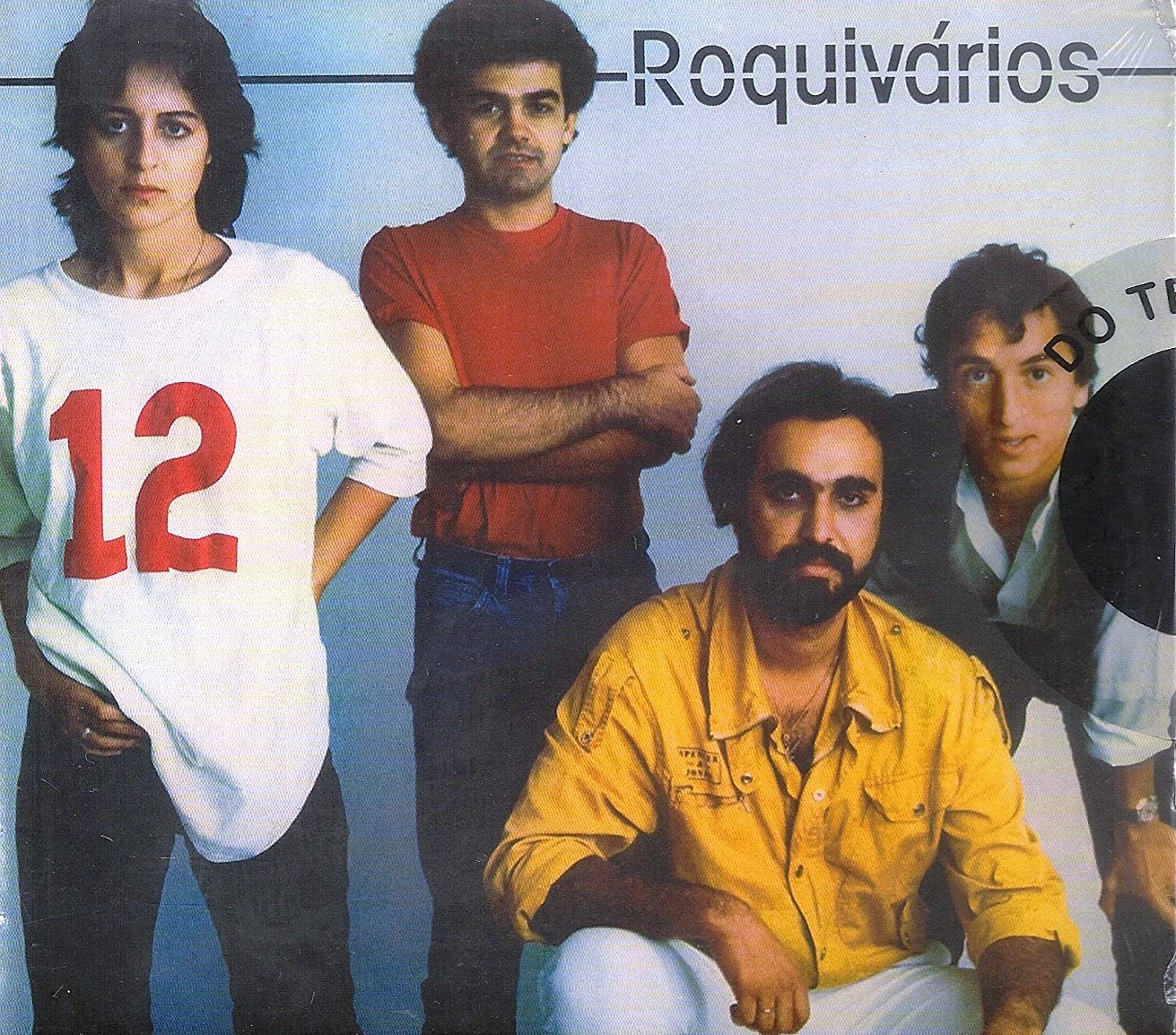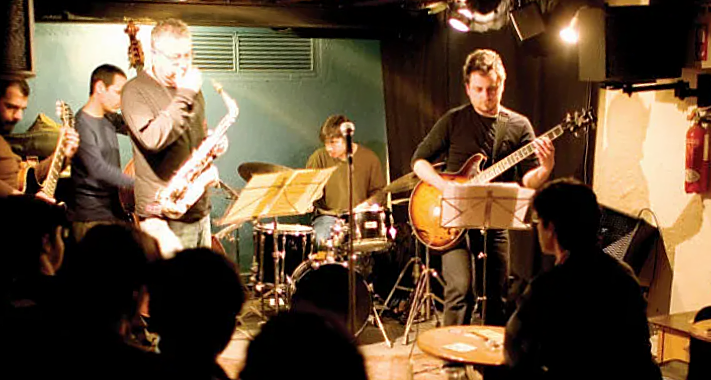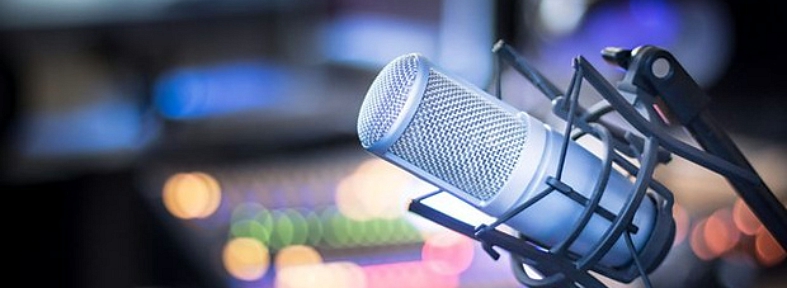Roquivários formed in 1981, taking advantage of the emerging Portuguese Rock, especially after the great success of the LP “Ar de Rock”, by Rui Veloso.
When they started they were called Rock & Varius and their name reflected what the band wanted to do: a music that went through different styles, from Pop to Reggae and Ska and not just pure and hard Rock.
The band was formed by Midus (Voice and Bass), Mário Gramaço (Saxophone and Vocals), Rabanal (Drums), Luís Jorge Loução (Guitar) and Paulo Corval (Bass).
Gramaço was a saxophonist who came from Jazz and had played with great names in that style in Portugal. Rabanal had been the drummer of a very famous group, a few years before, Aranha, led by Luís Firmino.
In the year of its foundation, they obtain a record contract with Rádio Triunfo and edit the LP “Pronto a Curtir” which is an album where the various styles of the band are present. Reggae appears with “Kaya Ou Não Kaya”, Rock with “Betty Punk”, “Ela Controla” and “Polivyinil” and Pop with several other themes. This record, however, did not bring anything new to the national rock scene. It was a very commercial song with little innovation (besides, the album was recorded in a very short time, with little care in production). The criticism devastated him. The public thought it was a joke and the band stayed afloat with many concerts.
In 1981 they released the single “Totobola” whose chorus read ‘They say that thirteen is the number of bad luck, but this game gives money until you’re done’. This theme, in a Reggae/Ska style, is already better produced and manages to please a lot of audience.
The band changes publishers (to EMI) and releases the album “Roquivários”, which contains hits such as “Mês de Abril” and “Cristina (Beleza É Fundamental)”. This record no longer has the participation of Paulo Corval who left the band. Midus becomes the main vocalist. The album’s production is entrusted to Moz Carrapa, a member of Salada de Frutas.
Despite all the commercial success, the band did not manage to impose itself, in an environment where Rock bands born with ‘Boom’ began to be selected. Of all the ones there were (and there were over a hundred) only the GNR, UHF and Xutos & Pontapés would remain. Shortly afterwards, the Roquivários ended their activities.
ARISTIDES DUARTE / NEW GUARDA
About that time Midus remembers good times and studio memories but does not hide the problems that plagued the band at a certain point, some of them personal. “The atmosphere started to deteriorate and we had to play concerts for another year”.
Midus released the single “Lá Longe” in 1985. She went to London to record an album with Luís Jardim and never came back. In 1988, Midus and Banda Amazónia participated with the theme “Amazónia”, written by Luís Jardim, in the National Music Award. In 1992 he recorded an album with the Coming Up Roses for Utility Records, Billy Bragg’s label. Then he played for six years with Anne Clark and accompanied Tanita Tikaram, Melanie C and Kym Marsh. In 2001 she confessed to Correio da Manhã “I have written a lot and I would like to record for a Portuguese publisher”.
Mário Gramaço has been a Saxophone teacher since 1988 at the Professional School of Music in Almada. He has led his own instrumental music groups. He collaborated on the album “Timidez” by Miguel Ângelo and played with Delfins in the presentation concerts of the album “Babilónia”.
Jorge Loução was Professor of Music Education. He was the lead singer of Graffiti, which released an album of the same name (CBS, 1988), but shortly afterwards they ended their musical activities. He played in bars until he settled at Bar Woodstock, in Almada.











[…] he formed Rock & Várius, a band from Almada. Through the label Rádio Triunfo, they released the album Pronto a Curtir and […]
Happy